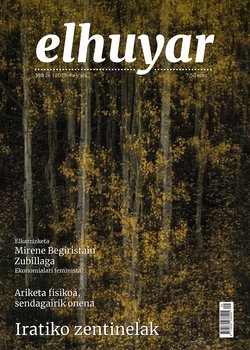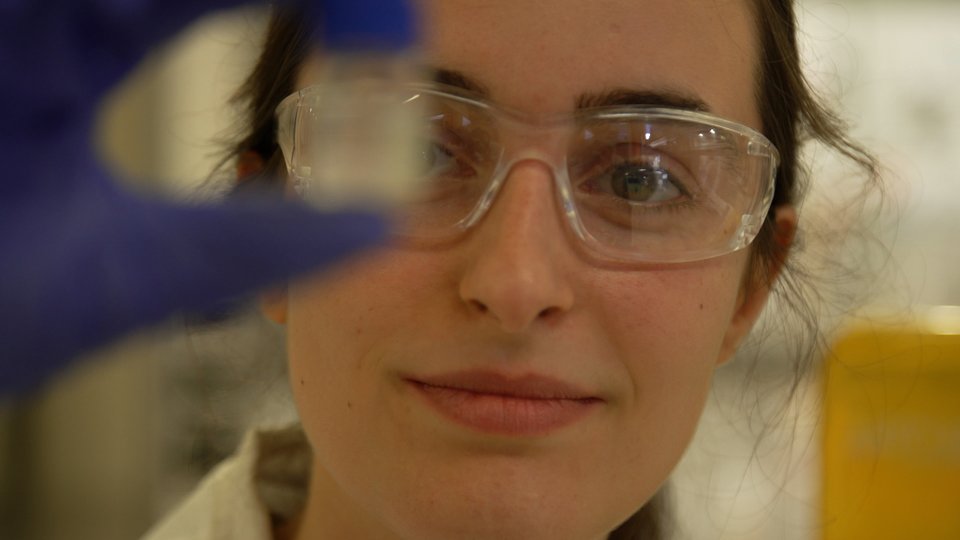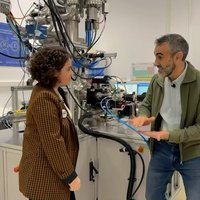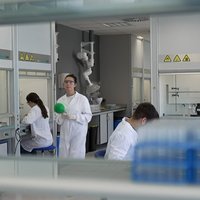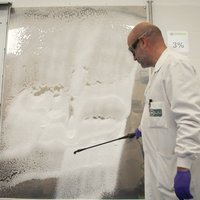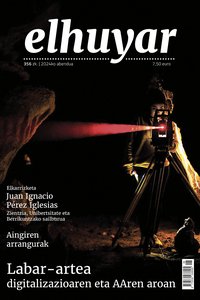Rivers and wetlands
The improvement of our rivers in recent years has not been a joke, the water is much cleaner. Now the challenge is to make the walkways more natural.
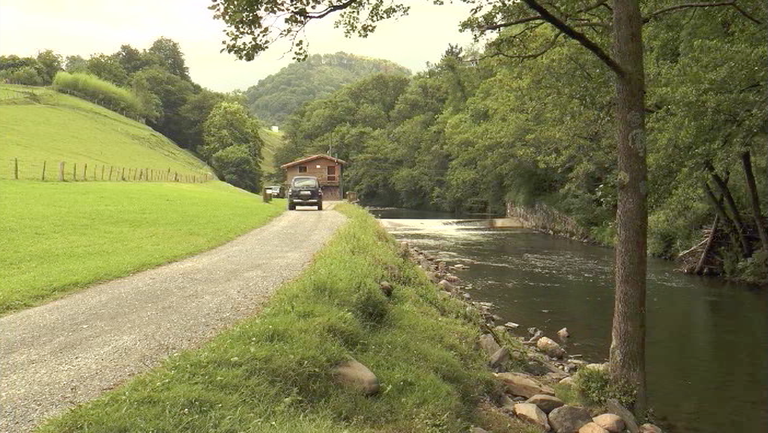
The rivers of the Basque Country are not born in Brussels, but they do pass through it. the 2000 Framework Directive introduced a major change in water management. This rule states that, for the coming year, 2015, all European water bodies will have to be in good ecological condition, and that is where the change came: in the new definition of ecological condition.
ARTURO ELOSEGI, Professor of Ecology, UPV/EHU: That was a huge revolution, because until then only one looked at the quality of the water, the water is clean or dirty and the directive says no, the water but also the communities that are in it and also that the rivers need their morphology, their natural flow, etc. by 2015, of course, not everyone will be in a good position, but at least procedures and methods have been put in place to analyze their situation, to see what it is and to solve the mistakes they have.
You can find everything in the course of the rivers. If some parts are close to this already mentioned good ecological situation, others are a sign of the historical relationship of domination between man and rivers.
IÑAKI ERRAZKIN, Member of Parliament for the Environment and Territorial Planning:XX. in addition, we have experienced what we have in the 20th century, rivers have been dirty and polluted areas, because all the dirt was dumped as it is, and it is true that in recent years there have been important steps in sanitation, purification... but it is true that we want to go beyond that and create a new culture around the rivers.
The ecological status of a river is dictated, among other factors, by the shape and vegetation of the water stream. The tree cover and riverbanks with rich vegetation guarantee life. On the one hand, like a large green filter, because this ecosystem purifies water. And on the other hand, because it adjusts the temperature of the flowing water, preventing heating. above 21 or 22 degrees Celsius, fish have trouble surviving.
In the upper parts of the course, traces of river control work begin to be seen, some dating back to ancient times. Farmers and ranchers have always gained land at the expense of the rivers. They have shaped their course, building walls and channeling the flow of water. From now on, and to the sea, the water will have to go from the place that the man said.
The villagers began to take the land from the river, but many have followed. The list is long and what interventions are more limiting. Here, for example, in the 1960s, they covered almost a kilometer of the river and built a large factory over it. The river disappears at one end and emerges again from the darkness at the other end. And here they made dwellings again on the same course.
The orography of the Basque Country, especially of the North, has not contributed too much to this in coexistence: narrow valleys, short walks and few plots to build. The Deba Valley in Gipuzkoa is a clear example of this cocktail. The river is channeled almost all the way and the riverbanks are completely cleaned to avoid flooding.
ARTURO ELOSEGI, Professor of Ecology, UPV/EHU: I think that in Europe we have a problem and it is that for thousands of years we have changed our environment, we have forgotten what is a natural forest, a natural river or any natural ecosystem, these are not usually neat, clean, they are not usually golf courses or clean pastures, but rather chaotic, dynamic, variable, complex ecosystems, and this complexity is very important.
Life needs this complexity. Trunks are being introduced to stop the decline of the fish population in the Araxes River. Food accumulates between the trunks and these structures provide protection for the fish.
ARTURO ELOSEGI, Professor of Ecology, UPV/EHU: And of course the good ecological situation means that the river community must be what they should be in it, the locals and not having too many foreign species: the salmon has been recovered, but they are in danger of losing the European mink, the satirical water or the long muzzle of the Pyrenees.
Olas, mills, industries, hydroelectric plants... there are hundreds of dams. Those who work steal water from the rivers, while the walls of those who stand still are an enormous obstacle to the water and to those who live in it.
The Leitzaran River is a clear example of unbridled haste. 80% of its course has been diverted. In the past, this Inturia dam produced electricity for trams in San Sebastián. Above the wall, in the one and a half kilometer stretch of the river, 240,000 cubic meters of sediment were accumulated. Now they're throwing it in phases so that so much material buildup doesn't go down the river in one hit. Askoa Ibisate is part of the team that studies the consequences of the disappearance of the dam.
ASKOA IBISATE, Professor of Geography, UPV/EHU: It's a complex process. The ones that have been eliminated so far have been of small size, but when they are of large size we still do not know very well what the answers will be and how they will be given. And to learn more and follow this up studies are done both on the morphology, to see how the river changes, up and down, once we remove the dams, how the transport of sediments is given and also how the river responds ecologically.
There is the construction of crossings when obstacles cannot be removed. An example of this is the ramps that have been built to allow the migration of fish in various dams. As a curiosity, it is known that there are ramps for salmon and the like and that there are other ramps for eel, so that the brush can be re-creased in this similar way.
The function of the stations in the water network is to receive information on the quantity and quality of the water. This device is a limnigraph. It measures the height of water in a well connected to the river and calculates, through a series of formulas, how much water it carries.
ESTEBAN TELLERIA, the person in charge of the aphorage: These are, these elevations, the answer, for example, when it rains, a sign that the water rises. And in this little spot that you see here, that's what some central one up there has done, to stop the water itself, then the signal goes down.
This machine is called salmon because of its shape. By entering the water and measuring its speed, it is possible to know the flow rate at that instant and thus confirm that the formulas used are valid. This information is an important tool for organizing strategies to recover the good ecological status of the rivers.
One of the consequences of channeling is that the speed of the water is accelerated. And this involves buying the riverbanks, the water carrying the land, as these trees with their roots in sight demonstrate. This phenomenon is called cut-off and the reason this happens is because the water can’t get out of the path and slow it down.
ARTURO ELOSEGI, Professor of Ecology, UPV/EHU: We forget that a vital part of the river is the flood plain, this area that floods when the water rises and where, normally, there were forests, wetlands that existed and that were of enormous importance, on the one hand, they were very diverse, extremely productive and on the other hand they are very important because they purify the water.
These plains in the lower part of the Oria River have traditionally been dried up and exploited. But here nature has been helped to regain its place. The dams that narrowed and channeled the river have been discarded and the canals have been drilled to allow water to enter the field.
FELIPE ÁLVAREZ, Head of the Hydraulic Works Service, Provincial Council of Gipuzkoa: Estuaries have undergone significant changes in recent years and our goal is to recover both estuaries and marshes and their ecosystems.
By the way, these humid environments act as a measure against flooding, and they are also a beautiful home for wildlife.
FELIPE ÁLVAREZ, Head of the Hydraulic Works Service, Provincial Council of Gipuzkoa: Frogs, snakes, many types of birds, invertebrates, which are the food of birds, and boars also come from across the river.
The measures taken in recent years have shown that streams and rivers have a very high capacity for recovery. However, much remains to be done: it is possible to deepen water purification, it is essential to recover the coastal forests, to protect and support the native species, of course, to continue the work of promoting the natural and healthy form of the rivers
ARTURO ELOSEGI, Professor of Ecology, UPV/EHU: After all, what we have in the rivers is the reflection of the entire basin, if we force ourselves to conserve the streams and rivers, to have them in good ecological condition, this will automatically say that we have entire basins in good ecological condition and that would be very good for society in general.
Buletina
Bidali zure helbide elektronikoa eta jaso asteroko buletina zure sarrera-ontzian


